Starting with Plot 146 -- lessons learned! (including how to deal with wireworms)
We used to grow some of our own food when the children were younger, and had enjoyed it so much we wanted to be able to do this again in our rapidly approaching retirement. With waiting lists for allotments being so long, we thought it might take two or three year to reach the top so over Christmas 2009, we decided to put our name on the local list.....
...... whoever would have guessed that, following a converstion with the Allotment Officer, that we would take possession of Plot 146 on 8th March 2010!!!! The ground was infested with wireworm and deemed unsuitable for growing, so we even got it rent free for the first year 🙂It had been ploughed, was covered in stones as far as we could see and looked massive. We wondered if we had taken on too much to manage.
Once we had put in our boundary fence the plot seemed somehow more manageable - luckily I had some fence posts not needed at work - and we set to with the digging. Dealing with wireworms turned out to be relatively easy:
1. Pick out every one seen when digging, and then feed them to the Chicken Club's hens at the end of each day.They rapidly learned that my appearance equalled treats so they were always waiting eagerly at the fence for me. They ate every single one, and there were over a hundred at a time to start with.
2. Make "potato kebabs" out of cut up potatoes with cane stuck in them and bury these 10cm deep at regular intervals, over a strip of land about a metre wide. The canes mean you can find them again! Dig these up a week later and clear off all the wireworms hanging off them and in the soil around... more food for the chickens 😀 Replace the kebabs and continue until that area is clear, then move to the next metre wide strip. I actually did three metres at a time as I was impatient, and it certainly was effective!
Other plot holders seemed bemused by the Potato Kebabs, and several told us that "everything would turn to mush" and there was no point in trying to grow anything at all. Interestingly a year later we were being told what good soil we had!
There were hundreds and hundreds of stones, so as we dug, out they came. We made a huge pile at one end of the plot, which was destined for hardcore for the base of a shed. Every time it rained, more appeared. It was never ending.
The soil was slippery clay with a compacted pan of gravel about 20cm down, and walking about when it was wet was difficult.This helped us decide on slightly raised beds with membrane lined paths covered with woodchip, and a plan was drawn up. We were given three compost daleks, a neighbour gave us lots of decking boards they no longer needed, and we were off!! Initially our beds were "sunken" rather than raised, as the soil level was below the level of the paths due to the volume of stones we had removed.
By mid April, there were four beds installed, one planted with onion sets, one with first early potatoes and one sown with spring onions, radishes, carrots and parsnips.
When we went away on holiday, the whole plot had been dug over and we felt very pleased with it all.
What a shock when we came back!
Ten days of warm, wet weather in mid April equalled weeds, weeds and more weeds. The plot was covered in a complete carpet of green. All the ploughing had chopped up and replanted the roots of perennial weeds and weed seeds had of course germinated by the handful, swamping the precious seedlings. On the plus side, the soft green growth, mixed with shredded paper, did make good compost for later in the year. The onions sets were still there under the weeds, and had nice green shoots, so all was not lost The potato tops had been frosted in our absence, but they did eventually put on new growth.
Lessons learned:
* Cover up the ground you are not using
* Give weed seeds a chance to germinate and then hoe them off before sowing seeds of anything you want to grow
* Cover up early potatoes if frost is forecast, or if you are going away when it might be.
* Do not let weeds set seed as it is just storing up trouble. That old saying of "One year of seeds gives you seven years of weeds" has some truth in it alright!
In the next few weeks, five more beds were installed and the middle of the plot was planted up with maincrop potatoes rather than leave it empty. A large section was covered with membrane, through which were planted some squash plants we were given by a plot neighbour. Carrots, parmips, radishes and spring onions were resown and carefully hand weeded once they had germinated.
Canes were put up as bean supports and both runner and french beans sown..... only nothing came up!
Lesson learned:
* Voles and mice eat bean seeds that are sown directly into the ground here
More were sown in modules and germinated at home, then planted out once they had two sets of true leaves. Slightly later crop, but better than no crop at all.
Most things grew well, and we proudly took our harvests home to eat. The remaining wireworms made holes in some of the potatoes and root vegetables, and ate the roots of lettuce plants virtually overnight, but they were tracked down and duly fed to the chickens. Some of the beetroots housed large fat grubs, and the chickens enjoyed these too. Carrots were a decent size but very difficult to prepare as some were a bit twisty and had black tunnels of carrot fly larvae through them.
The following year we attempted to deter this pest through companion planting, sowing onions, garlic and chives to disguise the smell of the carrot foliage. A resounding failure! We also had tiny seedlings disappearing almost as they germinated, thanks to very small black slugs living under the soil.
Lessons lesson learned:
* Remove every possible stone from the soil prior to sowing. Cover carrot bed with enviromesh or similar as soon as the seeds are sown, and only remove this to thin out. seedlings. Sowing very thinly means less of this! Plant slug bait in the ground too, so that the seedlings have a chance of survival.
The courgette plants we were given turned out to be butternut squashes and cucumbers, both of which gave us a huge harvest, sprawling in amongst the potato plants. The squashes stored really well and stayed edible right into the following May. They tasted better and better as they matured in storage, too.
The nets we used to protect the cabbages etc did not have small enough holes and Small White Butterflies could fold their wings and squeeze through. Small green caterpillars within a head of Romanesco are not that pleasant.
The wooden cage covered with debris netting looked fantastic and certainly kept out the butterfiies, but in the 60 mph gales that regularly whip across our site, it took off, crashed across the plot, snapping the trunk of our apricot tree in the process and crushing the leeks.
Lessons learned:
* Use the right net for the right job
* Consider the wind resistance of structures and secure them properly
* Soak brassicas in salted water prior to cooking... just in case!
By the Autumn in 2011, we had made huge strides and had managed to add some flowers too:
As the years have gone by, we have gradually improved things. Every year some crops are a resounding success and others less so. Unplanned excesses are much fewer though, and on the whole we manage to preserve or store enough from each Summer's bounty, to see us through, as well as having fresh vegetable growing throughout the year.
I am much better at preserving food so that it is actually edible, varied and useful to us, rather than creating vats of one kind of jam we all get fed up eating! Recipes will be included month by month which will help me be able to find them again and if anyone want to try these out they are very welcome. We eat far more vegetables than we used to!
We are never going to be totally self sufficient, but we do now grow almost all of the vegetables, herbs and soft fruit we eat, as well as a useful quantities of top fruit, supplemented by the occasional foraging expedition to the hedgerows.
Some years we have grown something new, only to not really enjoy it that much. Achocha, cucamelons and Aztec spinach are examples of these, which didn't then figure in the next year's plan. We do always add in something extra.. you never know if you don't try these things. We have grown oca since 2011 though, and would not be without it!
Following the floods in 2013, the site has had an increasing population of rats. We are bordered by the water meadows and farmland, so some are inevitable, but this year (2015) there have been so many that they have caused a lot of damage to crops .. sweetcorn went as soon as it was ripe, tomatoes were chewed and potatoes and beetroot damaged too. Rat bait has been the only way forward and we are hoping that reducing their numbers during the Winter will mean fewer babies next Spring. We shall never get rid of them completely of course, but this year has been particularly bad. There's always something!
The covered seating area means we have somewhere out of the rain, as well as somewhere comfortable to eat our lunch!
There is a covered seating area adjoining the shed, a mini-tunnel and lots and lots of canes, nets, blue water pipe and other useful items to hand, all of which makes life easier from day to day. Three pallet compost bins sit side by side inside the gate, replacing the daleks, with a tidy slabbed area in front of them, making loading and unloading the bins far less messy. This is just about the right amount of compost-making space for the plot, allowing for one "cooking" , one being filled and one being emptied.
In 2014, we entered the Southcote Gardeners' Association Annual Show, winning the Novice Cup and lots of awards in the main sections too! We also won a Silver Award for the Most Attractive Allotment in the Reading in Bloom Competition!
We worked hard in 2015 to try to make our plot as productive as possible, including growing as many flowers for cutting that we could fit in. We were amazed when we were awarded a Gold for The Most Attractive Allotment at the end of the Summer!!
Some maintenance tasks are now annual events:
*topping up the woodchip on the paths from the piles provided by local tree surgeons
* replacing wooden edges to the beds where these have rotted
* carting mountains of leaves each Autumn to pile and cover up, to miraculously turn into leaf mould for the following year
* adding compost and/or manure to beds in the Autumn, before covering those that are emprty with black plastic for the Winter
* top dressing the fruit bed with leafmould or compost, after pruning the bushes and canes, and giving them a feed of Sulphate of Potash
* planning what we are going to grow the following year and deciding which beds these will go into, when each will be sown or planted out and chekcing that we have the seeds.
* Seeds ... annual seed sales, seed circle exchanges, gits from friends, self-saved seeds... it goes on and on !!
And now, in Spring 2016 we are taking over Plot 145, right next door, so we can widen the range of what we grow and grow even more to share with others.
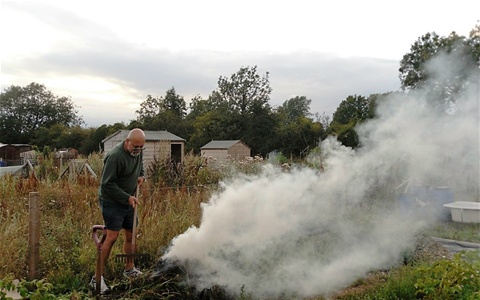
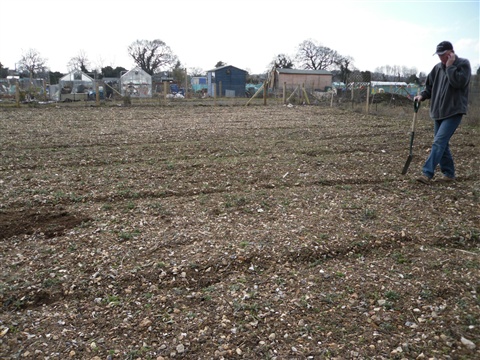
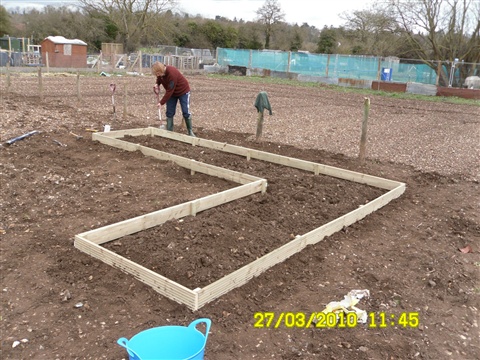
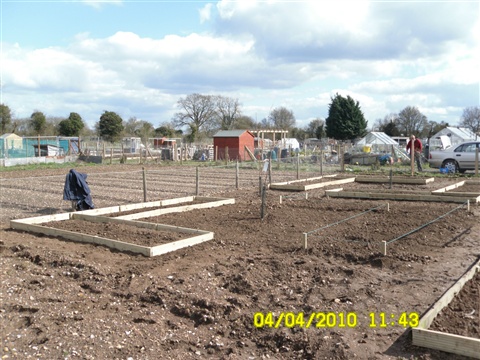



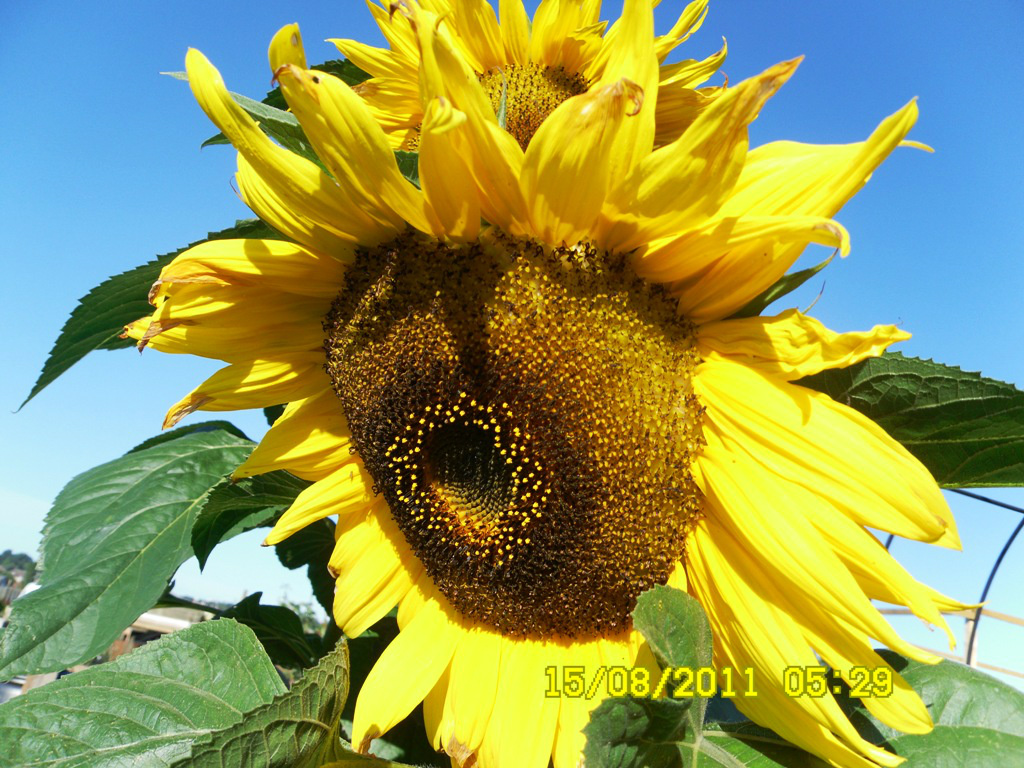
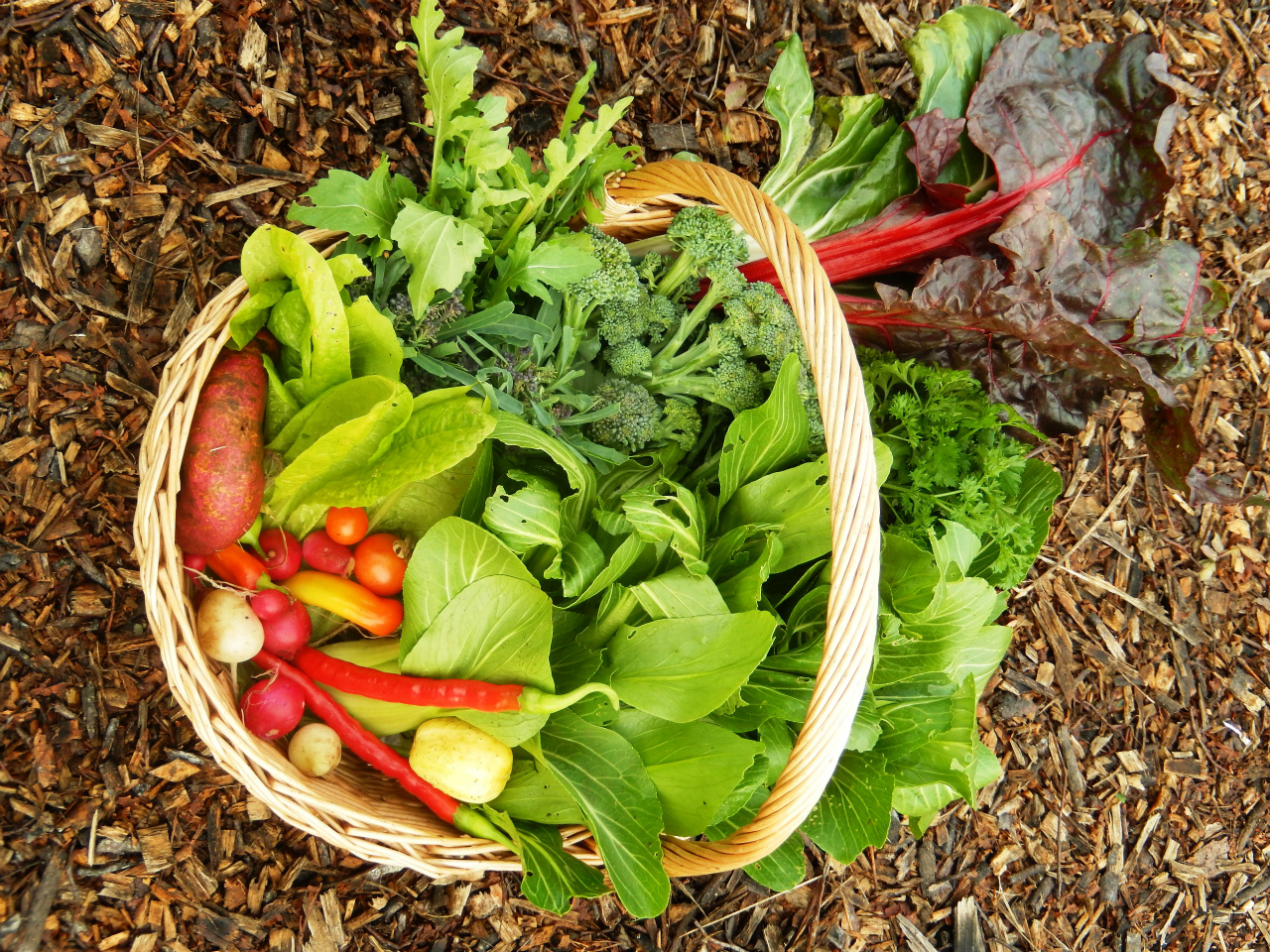
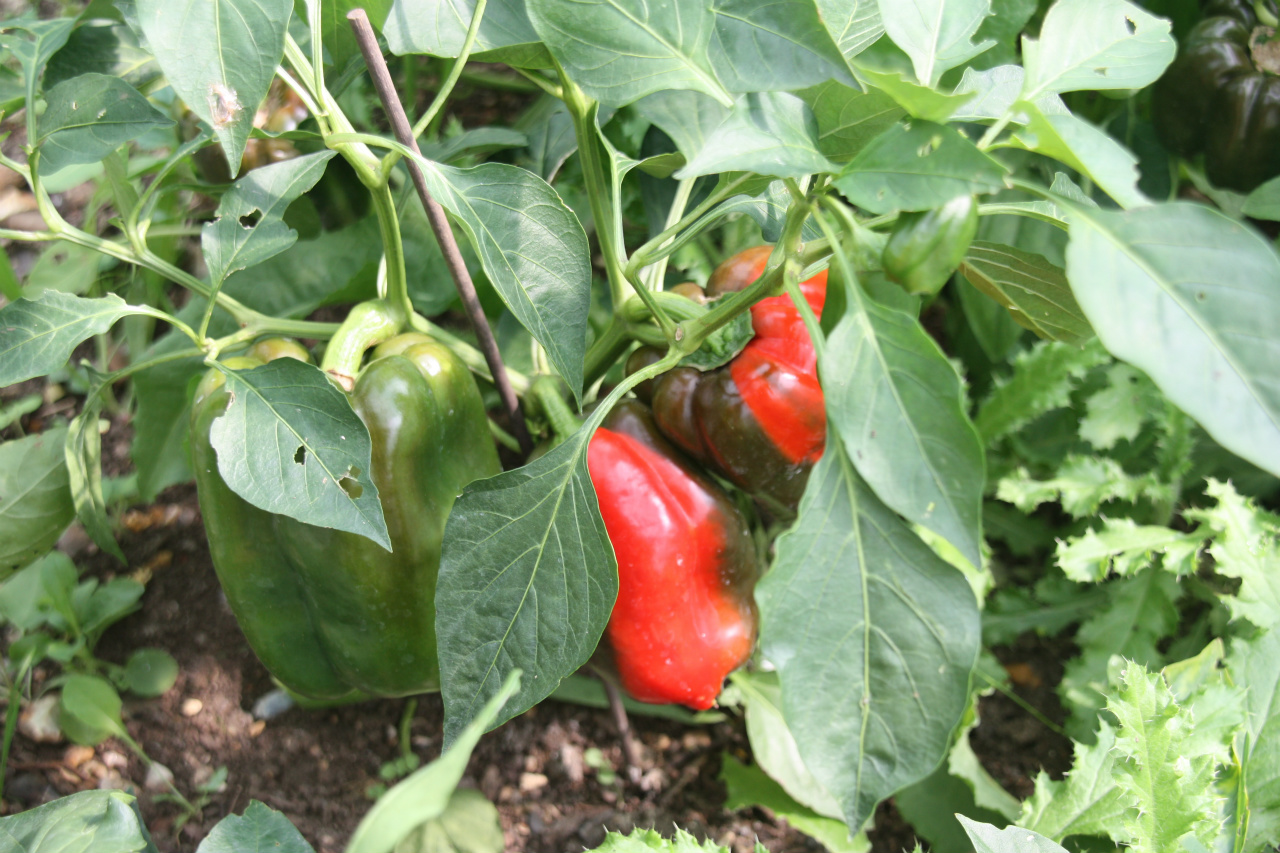

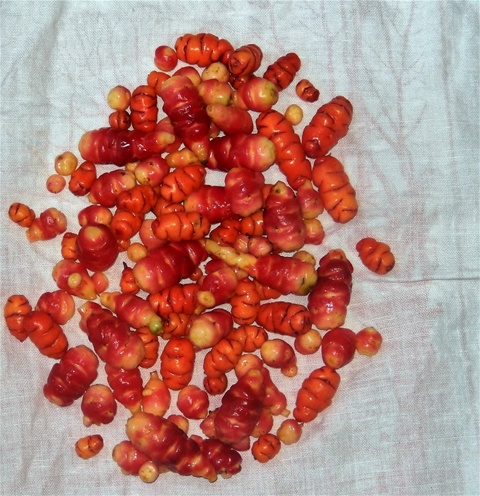

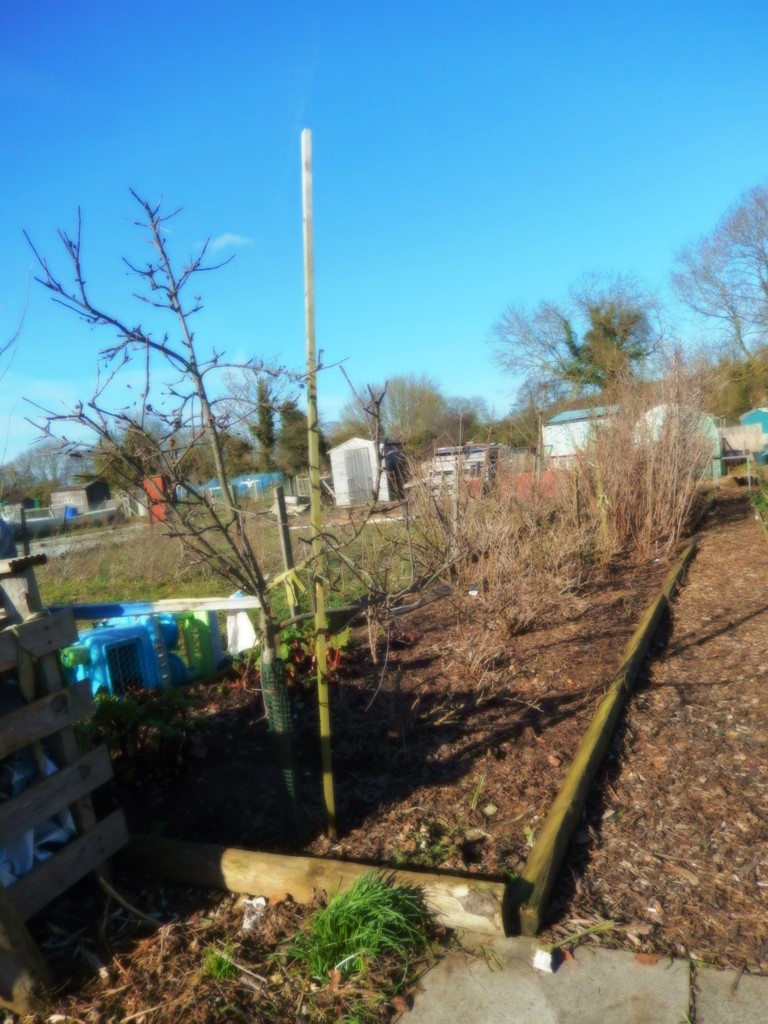
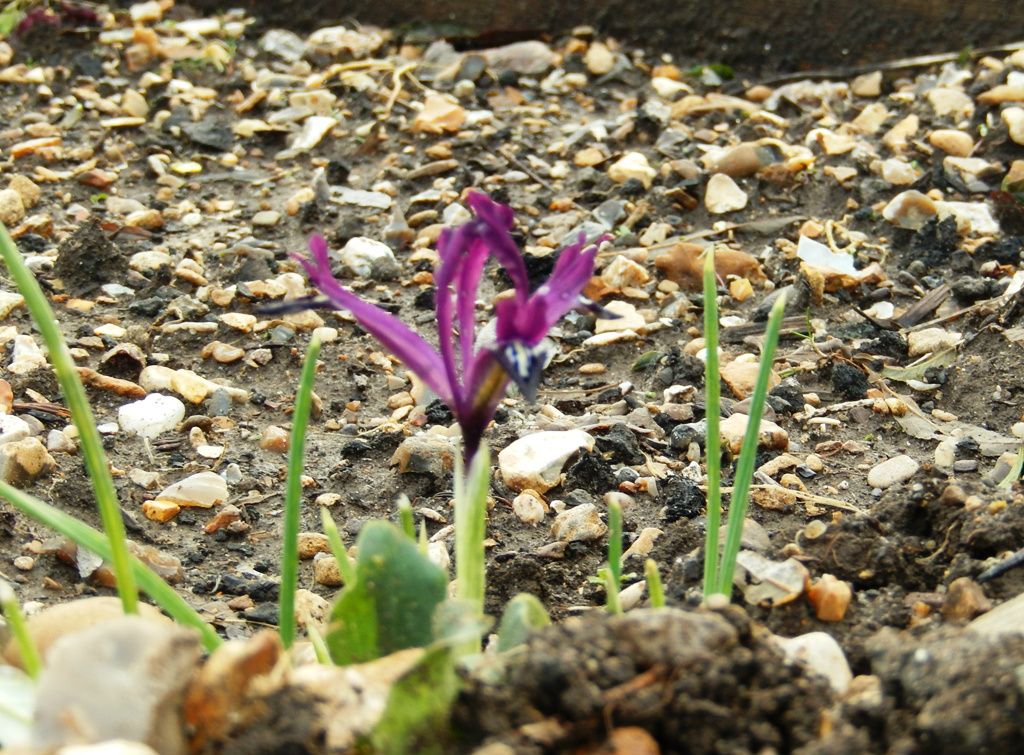


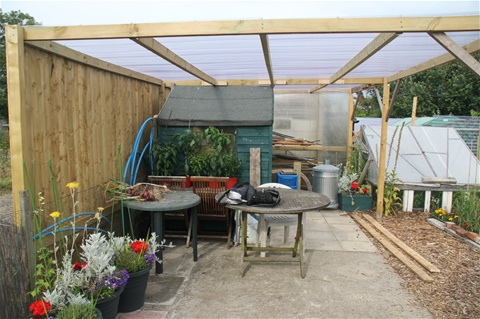
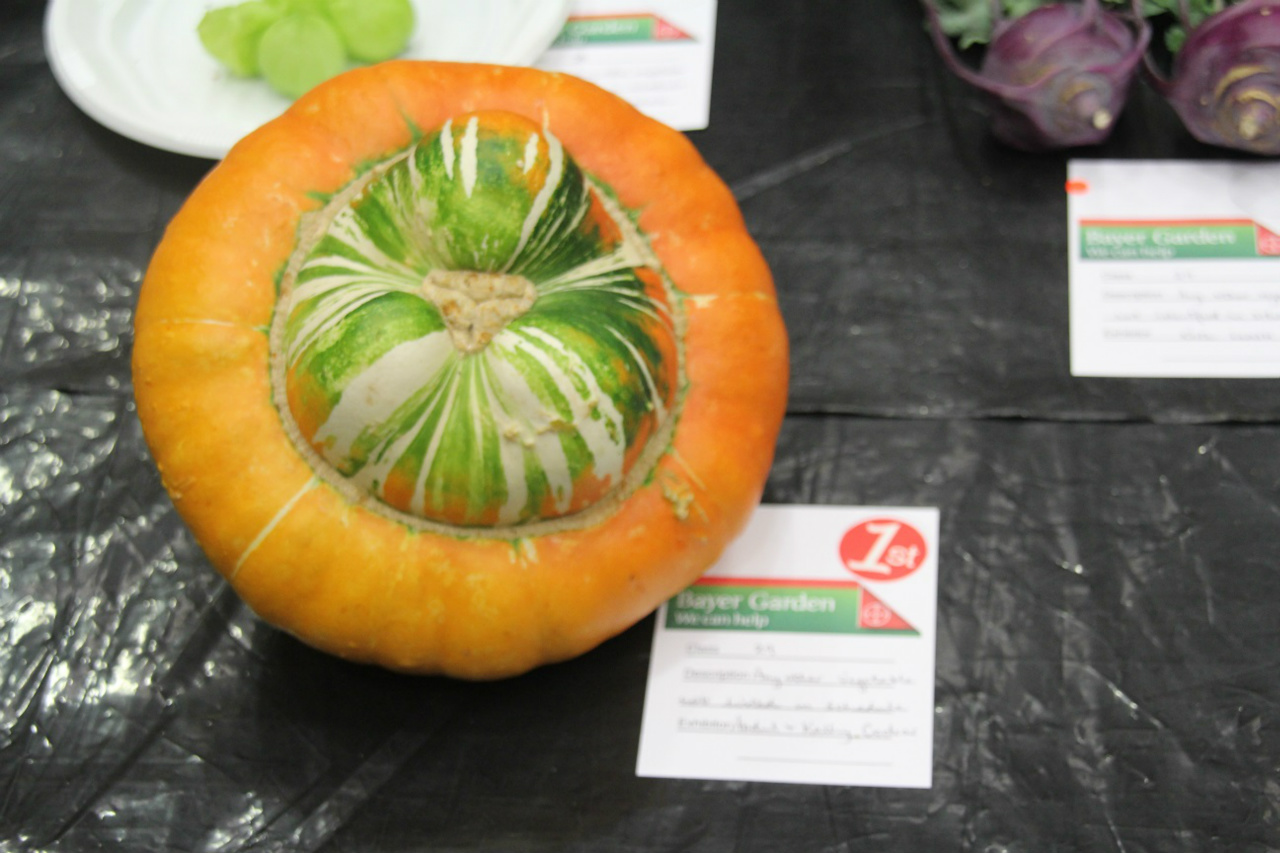
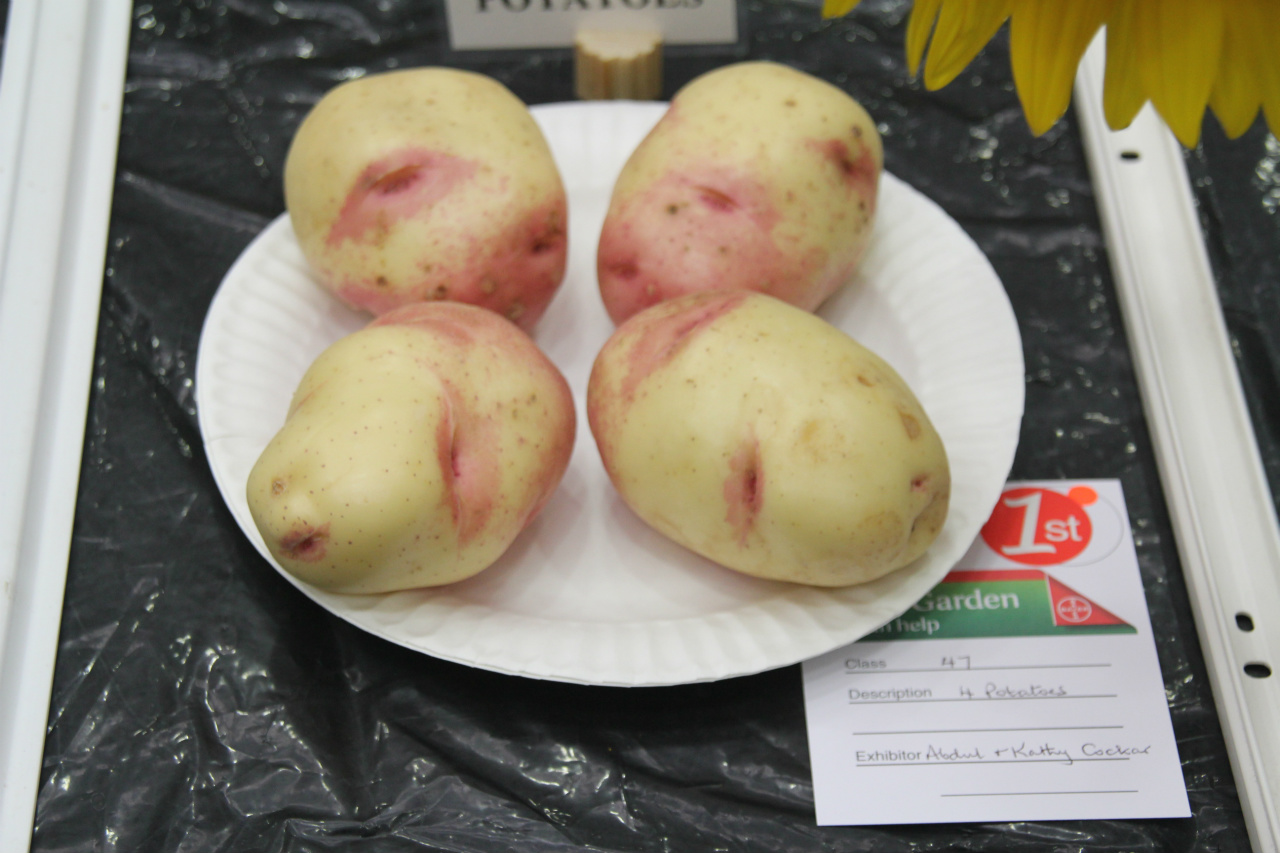
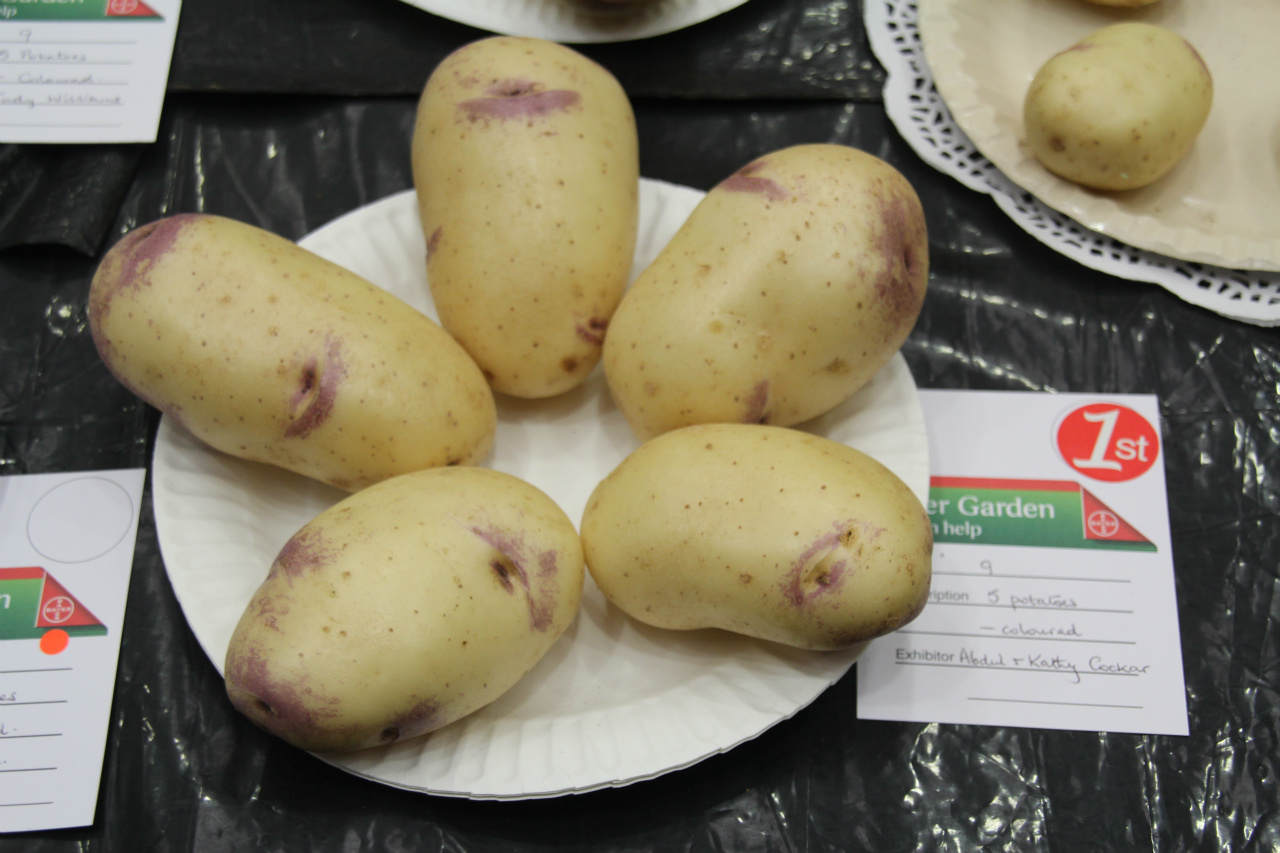
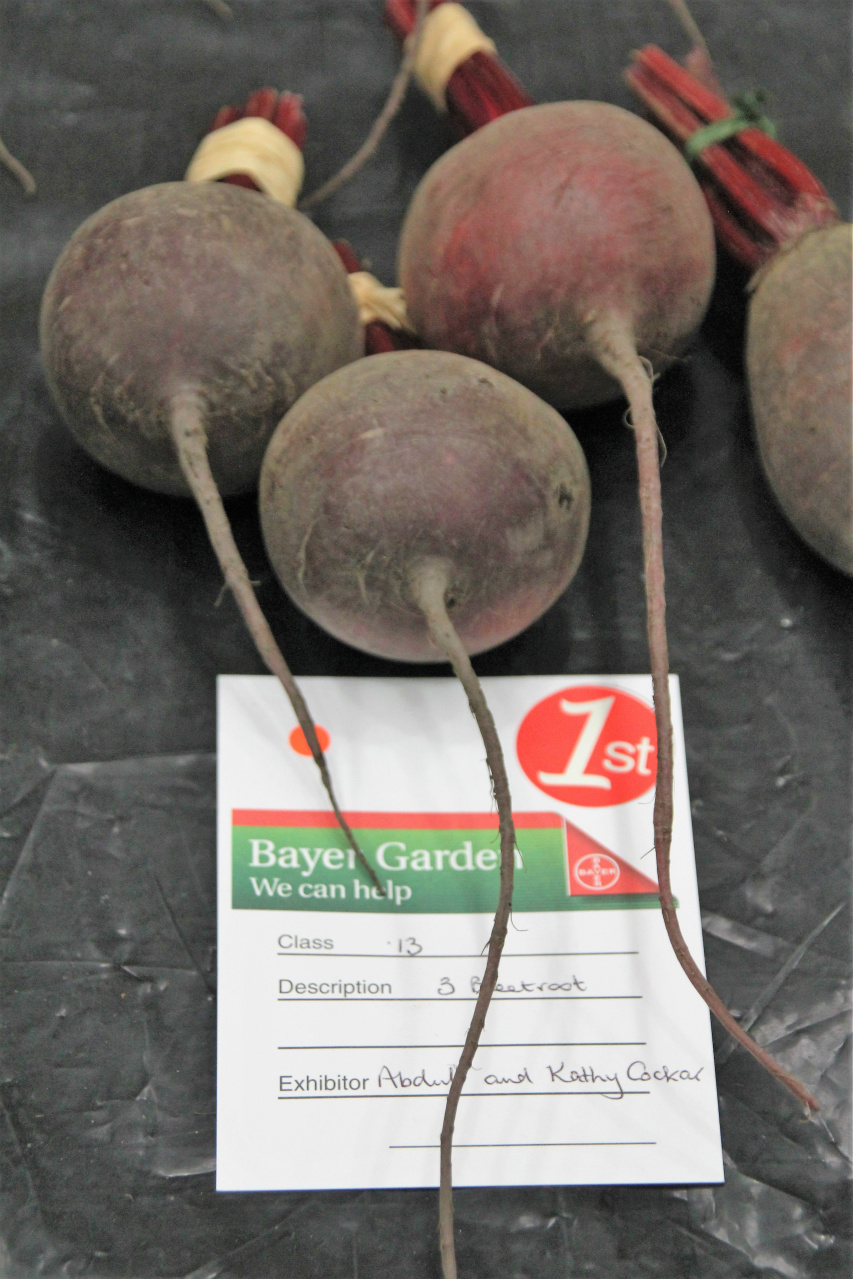

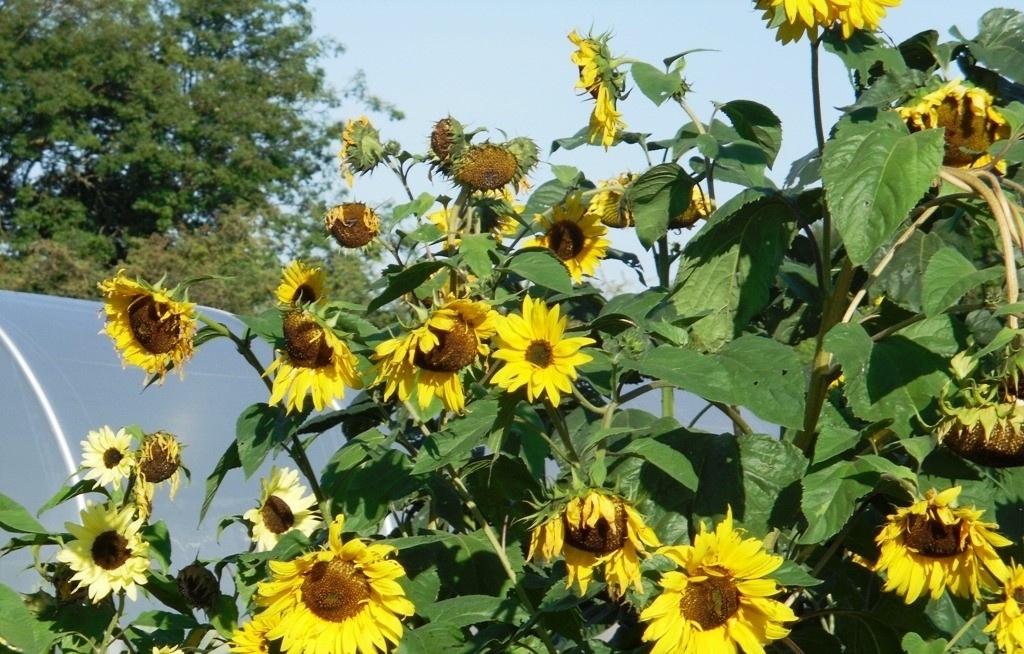
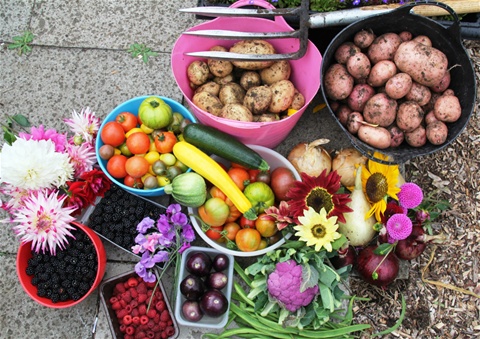

Tina Oldham
Wow, what an achievement, congratulations on your well deserved awards. Your page has been very inspiring and I shall look forward to reading more.